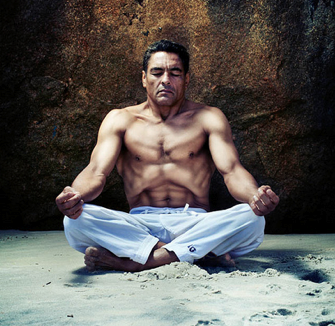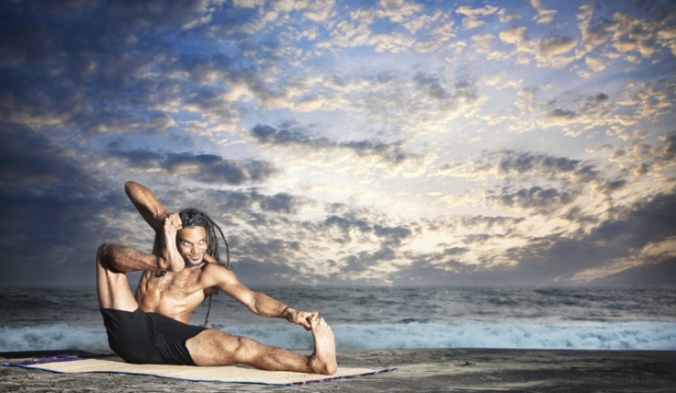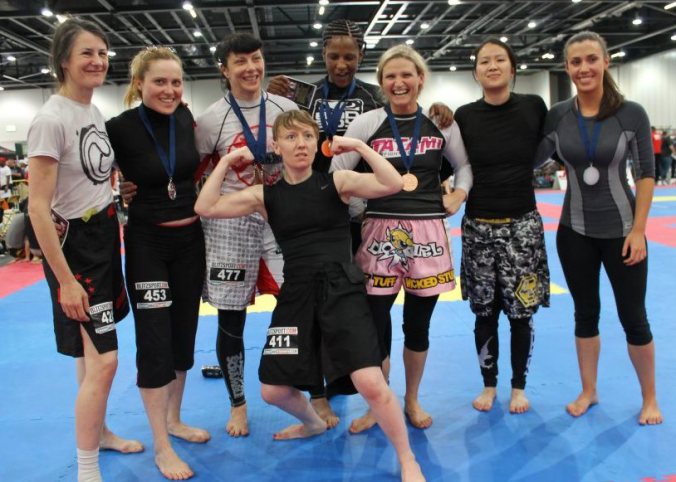Written by Lydia Lacey
Yoga is an ancient Indian practice, referring to a range of physical, mental and spiritual disciplines designed to aid a person’s self-evolution. It is a complex and broad practice; so what exactly can yoga offer to Brazilian jiu-jitsu practitioners? From the offset, they are two disciplines many lay people wouldn’t picture together, one practice is associated with fighting, the other with inner peace and stillness.
Believe it or not, but as a practitioners of both disciplines, I can tell you that yoga and BJJ fit together like a glove, with yoga complimenting jiu-jitsu fighters better than any other supplement practice. So how exactly can yoga aid your jiu-jitsu?
Rectifying Common BJJ Misalignments
In jiu-jitsu, quite often your body is in a hunch over position, whether you’re in guard or in mount. This puts an excessive strain on the shoulder and neck area, and is doubly destructive if you’re in a seated position at a desk for the larger part of the day. This’ll create bad posture and eventually a weaker spine – your BJJ practice will be significantly limited once your spine becomes restricted in its range of motion. In addition, the hip flexors muscles also tend to become tight and inflexible due to repetitive contractions in many defence positions. As your spine and hips form the basis of your entire physical existence, it is vital you keep such areas mobile for your BJJ practice – your performance is guaranteed to suffer otherwise.
Fortunately there are a series of yoga poses that can rectify the negative effects BJJ can have on the body. For instance, locust and bow pose are beneficial to our posture by strengthening the very core muscle connected to the spine (the multifidis), along with all the outer muscles across the back. As for the hips, lizard pose, warrior 1 and pigeon pose can facilitate in bringing greater mobility to the hips, which is ideal for those that fight off their back and for anyone looking to improve their escaping techniques.
Breath & Mind Control
The whole ethos behind yogi breathing techniques is that you can control your state of mind through the flow of your breath. So imagine those moments before a competition or fight, when your anxiety is running wild – think how useful it would have been to understand how to breathe yourself into a composed, yet alert state of mind. Rather than let adrenaline make you erratic and impulsive, learning to breathe effectively brings about self-control, power and composure, to which you can effectively channel and evolve your nervous energy into a fierce opposition. Yoga teaches you to embrace the present moment with a calm and rational mind – the ultimate form of power.
Being able to breathe effectively is all the more important during competitions – think of how many practitioners gas too quickly in their fights, and it’s no wonder why. Fighters succumb to this rapid, frantic breath that is short, sharp and rapid. Such breathing doesn’t allow the fighter to supply the body and the brain with the necessary oxygen required to continue fighting to its full potential.
Through the practice of yoga, BJJ practitioners can cultivate focus, the ability the manage their emotions and breath effectively during fights.

Improved Balance & Power
All balancing poses serve to develop core strength and stability, which in turn makes the practitioner stronger. A fighter with strong core is significantly less likely to suffer from injuries and will have more power in their takedowns. Fighters with strong core and balance will be considerably harder to sweep or overthrow from mount, side guard, and so on. A strong sense of equilibrium and the ability to transition swiftly from one position to another are characteristics of a superior jiu-jitsu fighter.
Yoga also cultivates muscular endurance by holding asanas (poses), thus strengthening the muscles to withstand longer rounds with a greater degree of power, which is of course paramount for any serious jiu-jitsu practitioner.By training the body to hold yoga poses, the body will be more able to withstand and blast through a vigorous bout, without injuring itself. Because yoga trains and frees the body to a heightened degree of strength and mobility, the body will be able to endure more and fight with a greater level of freedom.

Increased Flexibility & Mobility
My greatest asset as a jiu-jitsu practitioner was by far, my flexibility and mobility. As a petite female, I didn’t have the build or weight behind me to physically overpower my opponents. I had to rely on technique, and utilise the strengths I did have, such as being agile and light. Being heavy certainly does have its advantages in jiu-jitsu, but even the strongest fighter will be severely limited in their progression if their flexibility and mobility remain poor. Escaping positions, transitioning from poses and pulling off more complicated attacks are all the more accessible for practitioners that have a greater range of motion in the joints, which is why the best fighters are well rounded in their fitness.
Practicing yoga regularly would bring greater dexterity to all the necessary muscles and joints. By having greater flexibility, you significantly reduce your chances of incurring many injuries as the range of motion within both the muscles and joints have increased. Being flexible enables the practitioner to execute more complicated submissions as well as escapes, giving the fighter more options in their game.

Me at the 2012 seni show (on the far right)
Finding Instruction
To get the best out of your yoga training, finding a yoga instructor with extensive BJJ experience is evidently a strong advantage. You can still reap the benefits of yoga training from a regular class, but a teacher with BJJ experience can tweak the practice to better suit jiu-jitsu fighters.
To find out more or to book your own yoga workshop tailored for BJJ practitioners, get in contact with Lydia by clicking the link here.